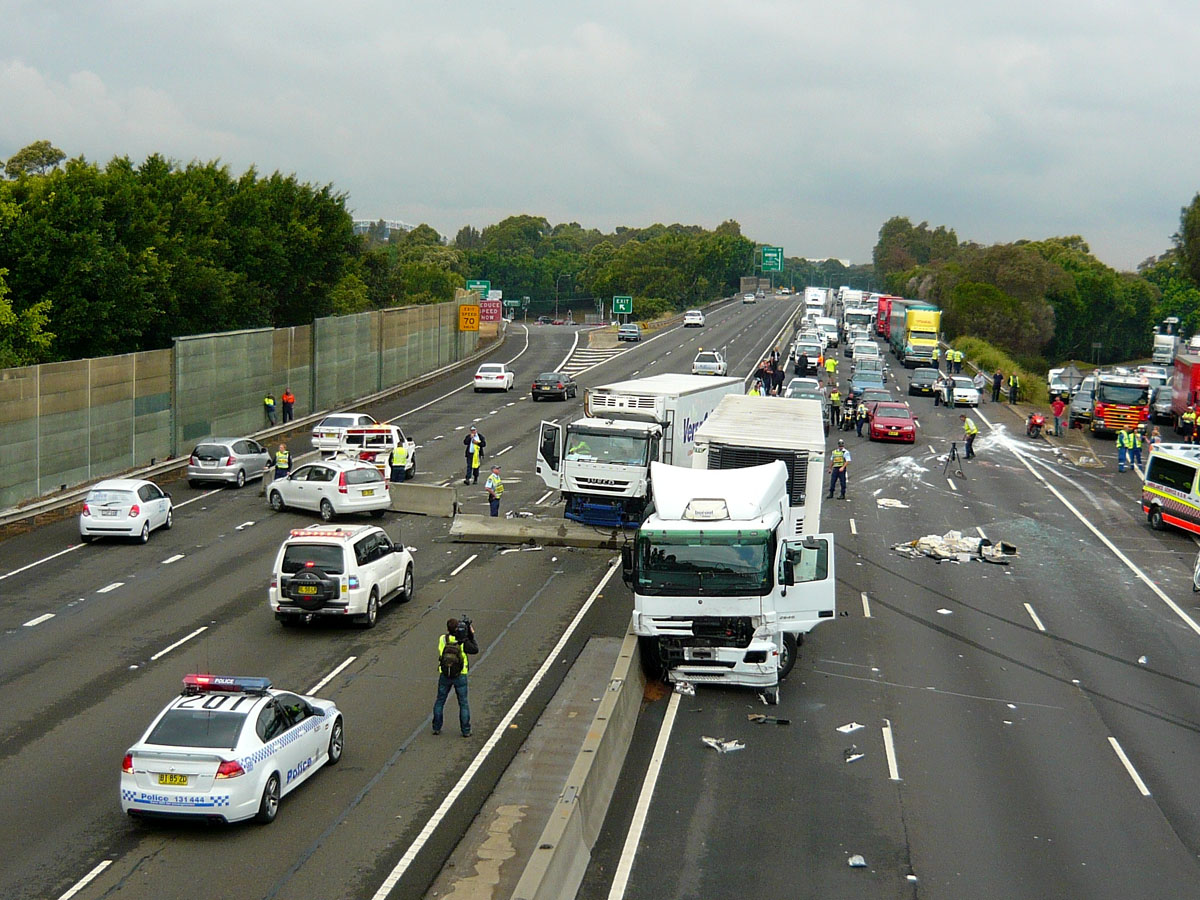
Wikipedia photo from the entry on Multi-Vehicle collisions
During the weekend, in Pennsylvania, yet another traffic pileup killed five people and injured more than 60. Oddly, I can’t find any information on how many vehicles were involved in that pileup, though several of the stories have referred to a pileup in Virginia two weeks ago, involving 69 vehicles. Other pileups in that area of Pennsylvania have involved 100 vehicles.
This is not just an American phenomenon. According to Wikipedia, the record for the pileup with the highest number of vehicles was in Brazil, at 300. In 2009, 259 vehicles were involved in a pileup in Germany. The record in the Czech Republic seems to be 231. In Los Angeles, it’s 216. In the Pennsylvania crash this past weekend, several of the drivers who were killed were professional drivers, who ought to know better than to drive too fast for conditions.
When one car rear-ends just one other car, that’s bad judgment — often fatally bad. But when 100, 200, 300 cars pile up, that is mass insanity. We have normalized the kind of insane traffic conditions in which pileups occur — too many cars, too close together, traveling too fast. If a driver can’t stop to avoid a hazard ahead, then that driver’s vehicle is not under control. That 300 vehicles should be out of control in the same place at the same time blows my mind.
Wikipedia has a good article on the subject, Multi-Vehicle Collisions, though the article says that very little research has been done on the causes. Some of the details in the Wikipedia article are hellish:
Multiple-vehicle collisions are particularly deadly as the mass of crumpled vehicles makes escape for survivors difficult. Even if survivors are able to exit their vehicles, other cars may strike them. Individual vehicles in a multiple-vehicle collision are often hit multiple times at high speed, increasing the risk of injury to passengers who may have survived the first impact with the benefit of now-discharged protective airbags. Collisions after the initial collision may occur from the side of the vehicle, where the passenger compartment is more vulnerable.
A fire in one part of the collision can quickly spread via spilled gasoline and cover the entire crash area. Multiple-vehicle collisions can also overwhelm local firefighting, ambulance, and police services making speedy rescues more difficult. If the collision takes place in a remote area, getting medical help to the scene can be a daunting task.
Suburban commuters drive every day in traffic conditions in which a pileup would occur if a single mistake by a single driver started a chain reaction. My guess is that people who routinely drive in such conditions have normalized it to such a degree that they no longer sense the danger. They may even be eating or talking on the phone.
Fortunately for me, my lifestyle rarely gets me into the kind of traffic in which pileups occur. I stay off of freeways, and I don’t drive into big cities. Last summer, while driving to the Raleigh airport, I drove through a severe thunderstorm. Visibility was terrible, and water on the road made hydroplaning inevitable. But the traffic around me didn’t slow down. I realized that if I slowed down to a safe speed, I’d be inviting the congestion of speeding drivers behind me and increase the risk of being hit from behind. So I got off the road and waited. That’s why I left for the airport early — to not put my flight at risk if there were traffic problems. But most drivers are in a hurry and won’t slow down, which multiples the dangers.
This is a form of mass insanity that is getting worse, not better. We keep building freeways, and new freeways seem to be overloaded as soon as we build them. If you’re forced to drive on these freeways, even if you’re aware of the insanity of it, you can’t protect yourself by driving at a safe speed, because you’ll be hit from behind. Maybe that’s why good drivers, including professional drivers, get trapped in pileups: They know that if they don’t maintain the same speed as the rest of the traffic, they only increase the danger to themselves and others as traffic packs up behind them. They’re trapped in a fast-moving slug of traffic vulnerable to a pileup. You either entrust yourself to luck in spite of the danger, or you get off the highway.
As readers of this blog know, I’m no techno-utopian. But I wonder if this is one of the problems that self-driving cars might be able to solve. But self-driving cars seem to be a bigger challenge than was expected. For a computer to drive a car is easy. What’s difficult for computers is the same as what’s difficult for good drivers — keeping track of all the idiots around you.
